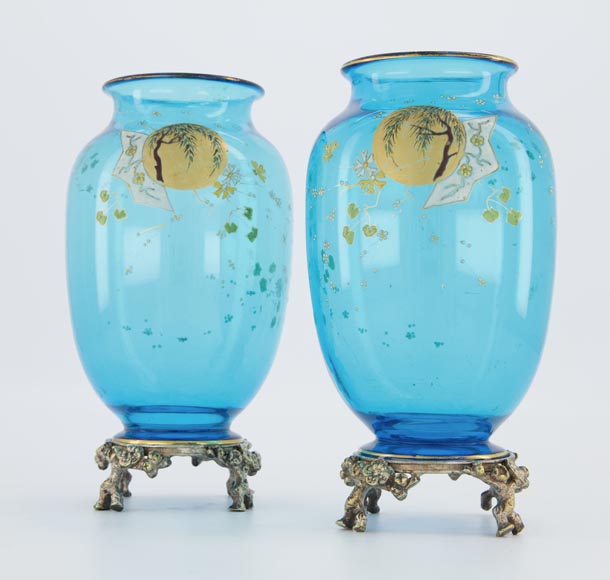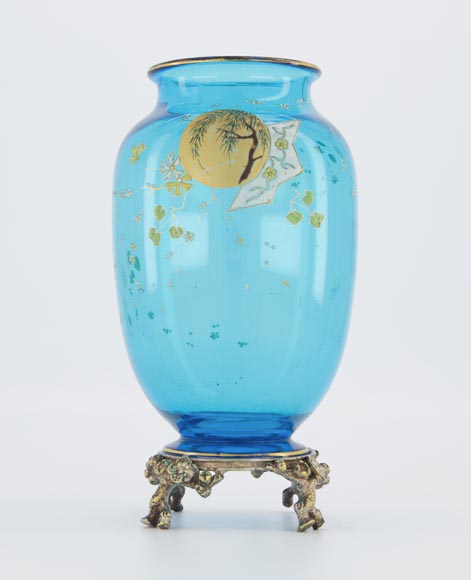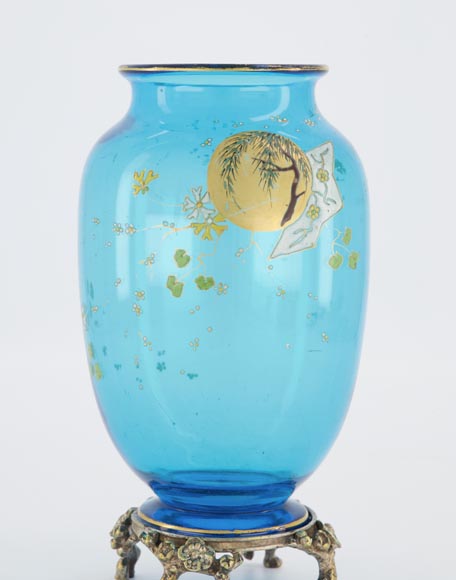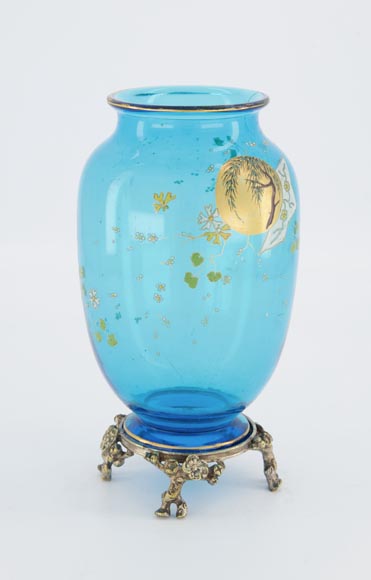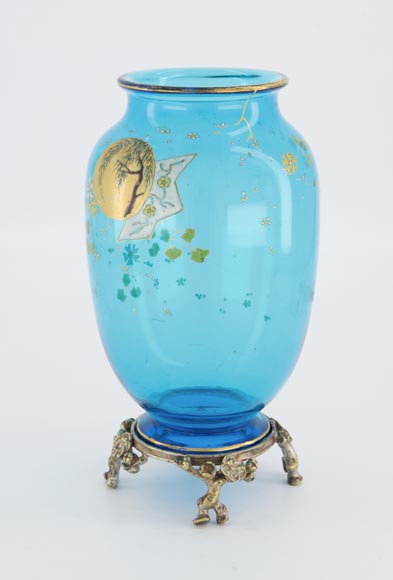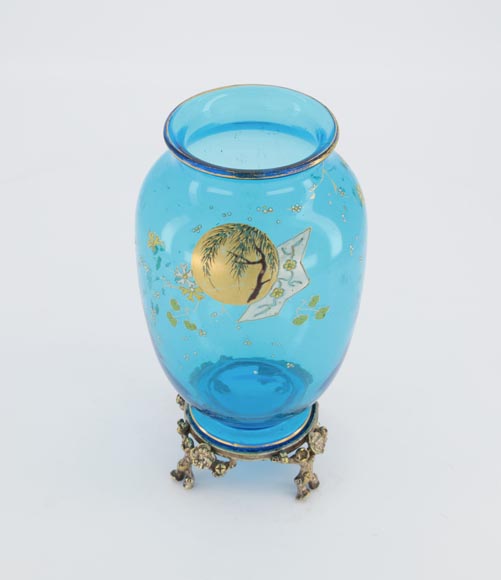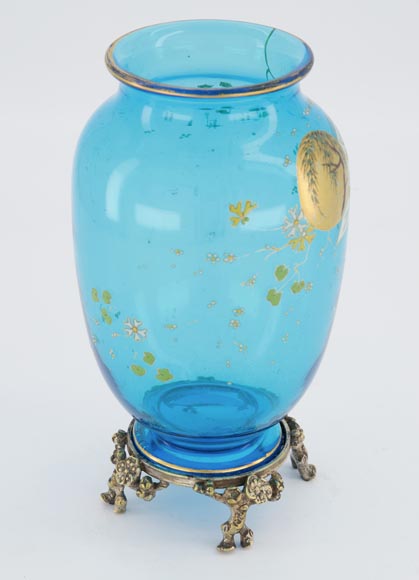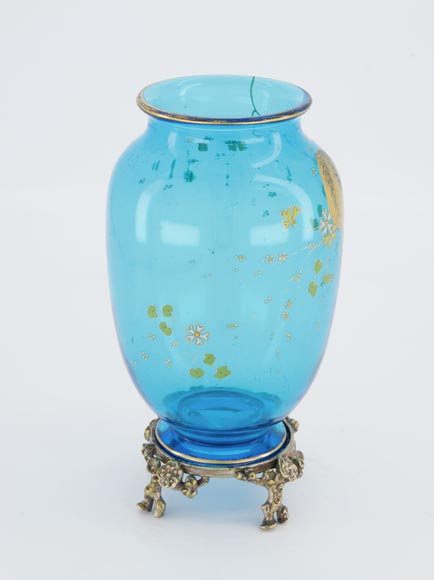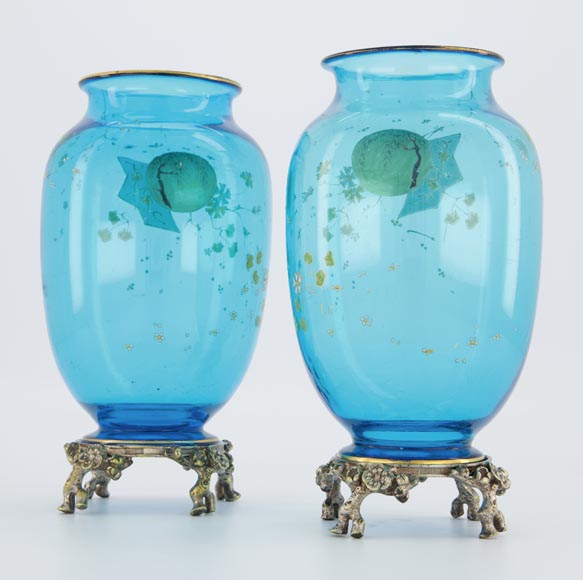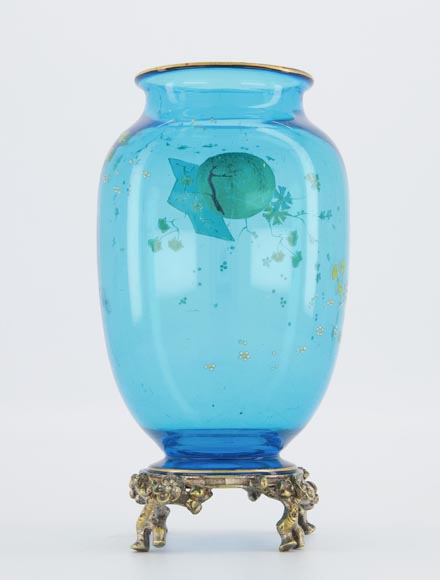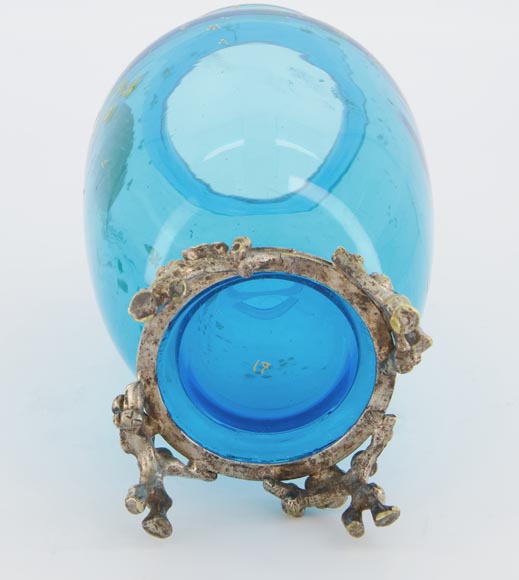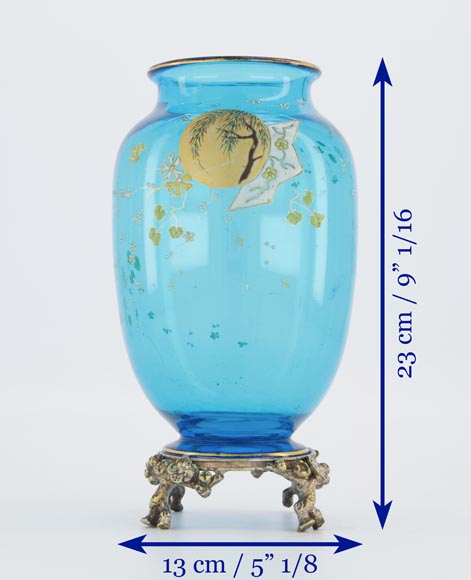Style Other / Ref.13481
BACCARAT CRISTALLERIE and Eugène ROUSSEAU (model by), Pair of vases « Clair de Lune » in blue crystal and gilt bronze mount, circa 1875-1890
Dimensions
Width 5'' ⅛ 13cm
Height 9'' 23cm
Depth: 5'' ⅛ 13cm
diameter: 5'' ⅛ 13cm
Origin:
19th century.
Status:
Good condition.
This rare pair of vases made of blue crystal with an enameled decoration and mounted in gilt bronze was made by the crystal-making factory Baccarat between 1875 and 1890 from a model drawn by Eugène Rousseau (1827-1890).
It is the model «Clair de lune », presenting a Japanese decoration depicting a full yellow moon reflecting a weeping willow surrounding by small stylized flowers put randomly on the vase belly. The neck and the base are underlined by a gold thread. The two vases are also presented on a four feet mounts made of gilt bronze and representing cherry tree branches with flowers.
François-Eugène Rousseau (1827-1890), known as Eugène Rousseau, is a glass maker master who established himself in 1855 as a merchant specialized in porcelain and earthenware at 43, rue Coquillière in Paris. Around 1867, he devotes himself to glass and appealed to the talents of Eugène Michel to engrave a range of glassware.
In 1867, while he was interested in Japanese motifs, Eugène Rousseau asks Félix Bracquemond to create a porcelain service which will be exhibited at the World’s Fair in Paris, where for the first time a European artist directly copies a Japanese artist, reproducing animal figures from the Hokusai’s Manga. Following the success of this service, the Japanese aesthetic will influence Rousseau's production. In 1869, two of his painted glasses were purchased by the Victoria and Albert Museum. His Japanese glass works produced with the probable help of the brothers Appert in Clichy and the crystal making factory Baccarat, will appear in 1874 in Paris at the Fourth Exhibition of the Central Union of Fine Arts Applied to Industry. Member of the Central Union of Decorative Arts since its creation in 1862, he received the cross of the Legion of Honor.
At the end of his career, he partnered with Ernest Leveillé, who was also his student. Leveillé will continue the work of Eugène Rousseau after his death, having bought his workshop rue Coquillière in 1885.
Created under Louis XV’s reign, the crystal-glass making factory of Baccarat got its international fame through its participation, all along the 19th century, and until 1937, to the World’s Fairs. It is during this period that the manufacture showed the world the excellency of its production and its constant search for innovations, winning medals at every edition. The Baccarat realizations inspired other European glass or crystal manufactures during the following decades, and dictated the taste, the technical execution and the stylistic models. The works of the manufacture are scarcely signed between 1764 and 1860, year where the first labels did appear punctually. Fifteen years later, a seal with the name of the firm is placed on some blowing models and gilded bronze pieces. It is not until 1936 that the « BACCARAT » brand, with a carafe and two glasses, started appearing systematically on every production.
Informations
Price: on request
Recommended for you :
Dimensions:
Width: 230
Height: 320
Dimensions:
Width: 14
Height: 28
Depth: 10
Dimensions:
Width: 25
Height: 40
Diameter: 50
Dimensions:
Height: 33
Depth: 16
Dimensions:
Width: 27
Height: 17
Depth: 23
Dimensions:
Height: 11
Diameter: 37
Dimensions:
Width: 38
Height: 15
Depth: 20
Dimensions:
Width: 9
Height: 17
Depth: 10
Dimensions:
Width: 15
Height: 38
Depth: 15
Dimensions:
Height: 25
Diameter: 12
Dimensions:
Width: 39
Height: 10
Depth: 23
Dimensions:
Height: 23
Diameter: 10
Dimensions:
Height: 62
Diameter: 21



